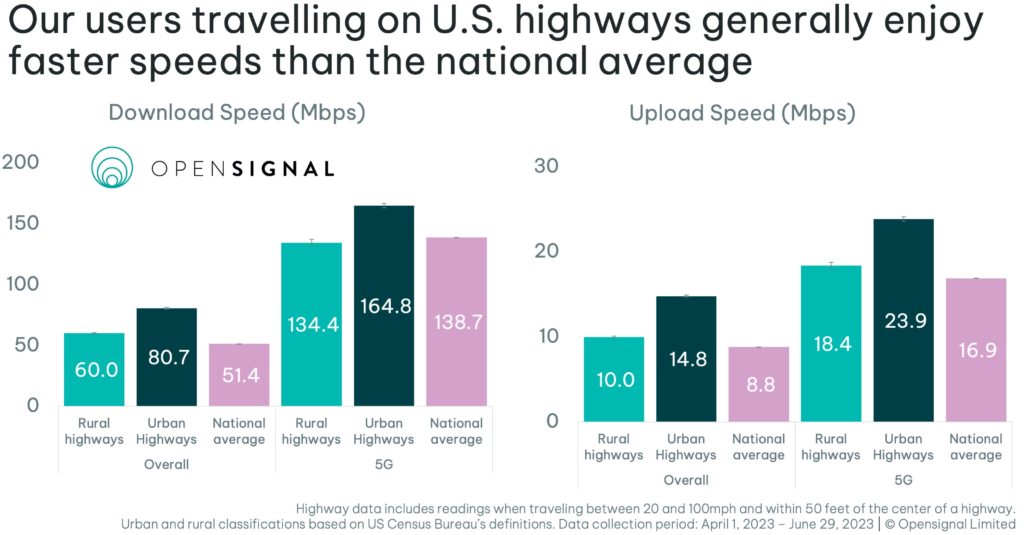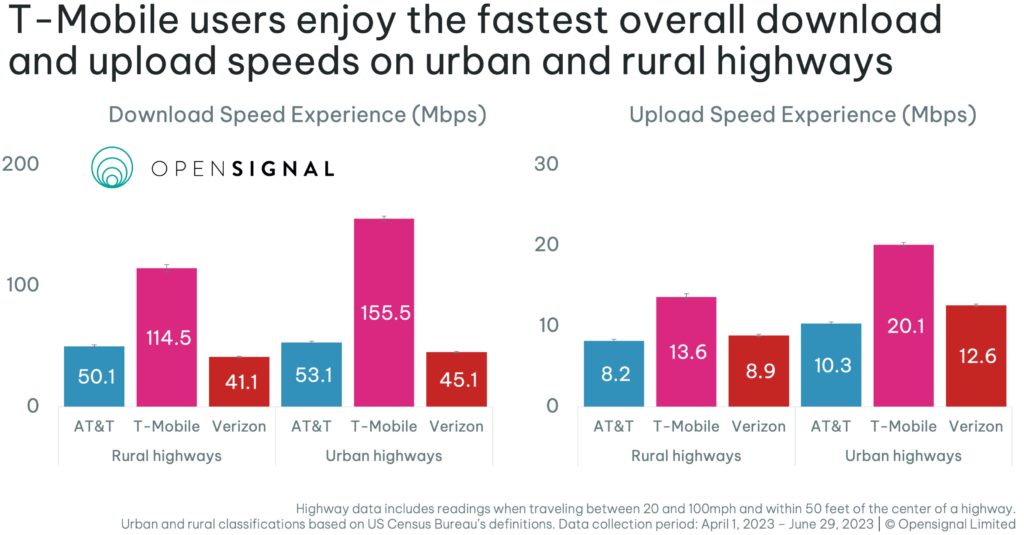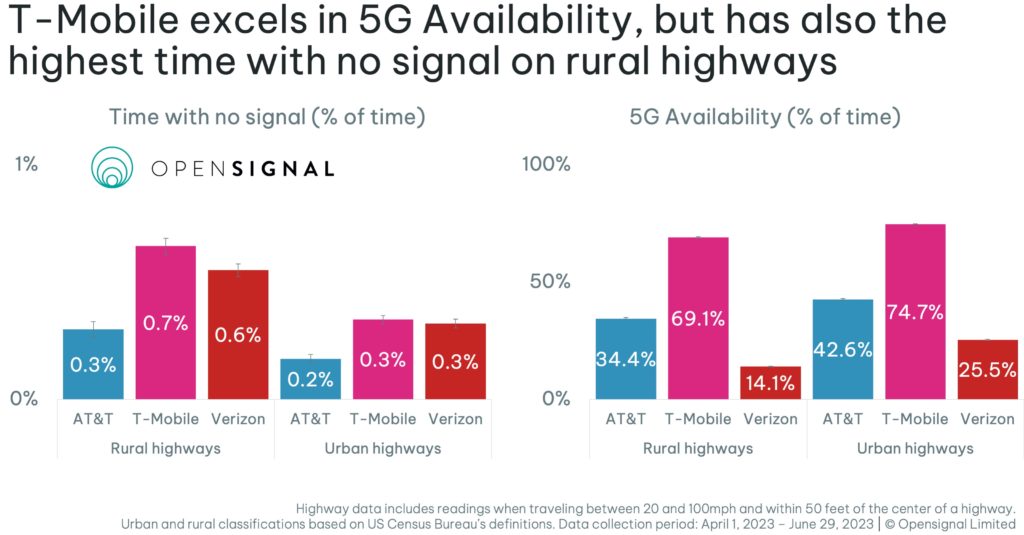Mobile users experienced faster average download speeds on urban and rural highways than the overall national average, according to Opensignal report
Inspired by the growing popularity of road trips as a form of vacations in the U.S. Opensignal examined the mobile experience of its users as they travelled across the country’s highways. Ultimately, the report showed that U.S. highways offer a better mobile experience than the national average.
For instance, users got 56.9% faster average download speeds on urban highways and 16.7% on rural highways than the overall national average of 51.4 Mbps, according to the report. When it comes to 5G, specifically, users on urban highways also experienced notably higher speeds than the national average, as well as faster speeds than those on rural interstate highways (22.6% faster). On rural highways, however 5G download speeds were 3.1% slower than the national average.

“There is a substantial disparity between interstate highways in urban and rural areas, with our users on city highways seeing 34.5% faster speeds than their rural counterparts,” commented Opensignal.
Perhaps unsurprisingly, T-Mobile US users experienced the fastest overall download and upload speeds on both urban and rural highways, as depicted in the graph below. T-Mobile US consistently tops Opensignal’s experience reports, particularly in the areas of 5G speed and availability.

Additionally, while T-Mo “excelled” at 5G availability, its users also spent the most time unable to locate a signal along rural highways. “5G Availability is substantially higher on T-Mobile than with AT&T or Verizon. The difference between urban and rural highways’ 5G Availability is especially noticeable for Verizon, with our Verizon users spending almost twice as much time connected to 5G in the cities (25.5%) than outside of them (14.1%),” said the research firm.
AT&T users, according to the data, spent only 0.3% of time with no signal along rural highways. For T-Mobile users, that number was 0.7% of the time, and for Verizon users, 0.6%.

The report also revealed that on highways, users spend more time connected to 5G services and less time with no signal, and that 5G users connect to 5G services more frequently on urban than rural highways — 49.7% versus 36.2% of the time — and more frequently than the national average of 31.4%.
“Seamless and reliable connectivity around highways to support both smartphone users’ connectivity needs and autonomous driving is one of the key use cases for 5G rollouts. It is especially needed in the U.S., which is well known for its strong dependence on automotive transportation and interstate highways,” concluded Opensignal.

